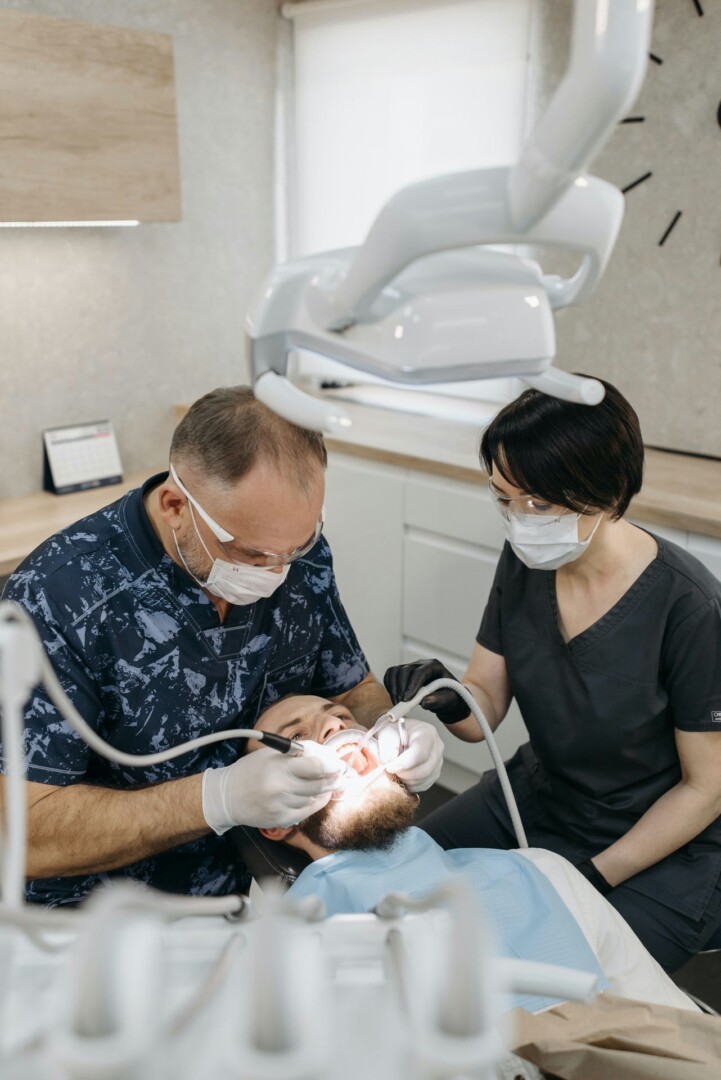At the start of a new year (or anytime, for that matter), most dental practices are thinking about growth. Is growth a goal at your dental practice? In this article, discover two proven steps on the path toward achieving the success you want for your dental practice.
Trying to grow your dental practice is important for many reasons.
Growth could include more patients receiving the treatment they need. It could mean adding new services, new team members, or even a new location. Growth almost always includes financial advancement, but thinking of this as a negative or “self-centered/greedy” focus would be unwise.
Financial growth is a matter of success or failure for most dental practices and it makes all other forms of success and progress possible.

Why do dental practices struggle to realize growth goals?
Jenessa Zohner, Director of Enterprise Success at Dental Intelligence, has found that many of the practices she works with are driven by growth, and yet many struggle to realize their growth-related goals. Why is this so?
Although no dental practice is the same, some principles are applicable to any dental practice, regardless of size or how many years they’ve been in operation. These principles are not new or difficult to implement. They do require the development of new patterns or habits, and that can be challenging. However, Jenessa has found that when the leadership in a dental practice work together for a single purpose, some really exciting things can happen.
This may be the single most important principle of all: Uniting as a team to reach a shared goal is powerful. When inevitable obstacles appear, the combined strength of a team can push through those obstacles and continue progressing toward the fulfillment of a shared objective.
Step 1: Understand strategic goals and learn how to set them
During some recent training with a practice, Jenessa met one-on-one with several team leaders to discuss their progress. She asked each of them if they had strategic goals for the upcoming year. Most had goals, but they were unsure what she meant by “strategic.”
A strategic goal is simply a goal based on past measurable performance. Goals can sometimes be less defined, making it harder to know if success has actually occurred. Setting strategic goals with consideration and care can be an effective way to measure progress and performance in a dental practice.
“It’s about empowering your team through data to thrive. If they know how to measure their success and tie it to their own personal goals and efforts to grow, they’re far more likely to make the effort necessary to see those goals through. Knowing how you are doing establishes a starting line. It inspires personal accountability and creates motivation to act.”
Jenessa Zohner, Director of Enterprise Success at Dental Intelligence
Jenessa recommends that practice leaders use data for these one-on-one meetings to discuss how they are doing and what they feel they need to change.
“Help them to determine what they need to do and guide only as needed,” she said. “Make sure expectations are clear. Meet with them monthly to check in and see how they are going. Whenever possible, have them measure and talk about their own performance.”
Using data and teamwork to create an action plan
CHALLENGE: In a conversation with an office manager at a large practice (36 team members), this leader expressed frustration over how hard it was to manage so many people.
SOLUTION: In response, Jenessa asked her if she had assigned team leads as a way to transfer some of her load to others. She hadn’t, but asked how she might do something like that without losing control of her team.
“We talked about restructuring and then giving her leads the ability to know what metrics they need to know and how to measure their team and their department,” Jenessa said.
She explained the value of closely following their metrics using Dental Intelligence, and how doing so would empower them to lead their respective teams and alleviate some pressure from her. Ideally, those leads would report regularly to the office manager while maintaining significant autonomy over their teams.
QUICK TIP: Action planning is very important for a data-driven practice to function as it should. Here are a few ways to get started.
- Build accountability into your calendar so that those that report to you know when they will be meeting with you and what will be discussed.
- Include specific measurements that will be a part of the conversation with each person. Most evaluations should be the same format.
- If they are new to this concept, help them see the purpose and connect it to their growth and their goals. Paint the vision of a data-driven culture and how important their contribution is in creating it.
- Then, be consistent!

Step 2: Find the production you’re looking for with existing patients
Dental practices require a constant infusion of new patients to grow, right? This is an almost universally accepted truth among dental practice owners and management.
Actually, analysis reveals that unscheduled production for existing patients is a far more effective lever for increasing production per visit. Production Per Visit, or PPV, is one of the single most important measurements of how a dental practice is performing. Jenessa has found this to be the case time and again as she trains practice teams.
CHALLENGE: As dental practice teams discuss ways to increase production, the first response is almost always “add new patients!” New patients are important. But focusing almost exclusively on them while neglecting the untapped gold of unscheduled production is short-sighted at best.
SOLUTION: Focus on production from existing patients versus all the work of trying to add new patients. Not convinced? Jenessa shared the following two success stories:
SUCCESS STORY 1: Alice Dental Associates in Alice, Texas, promoted low-cost fluoride treatments to increase their hygiene acceptance to an incredible 89%. They’ve made this very affordable for people who don’t have health insurance, offering fluoride for $25 per treatment. After analyzing their current patient list and determining what they could offer to increase their hygiene production, they had 2,900 or 90% of their 3,200 patients accept this low-cost treatment.
SUCCESS STORY 2: Another practice had only 34% of their 1,500 patients (around 530) who were receiving fluoride treatment. Janessa told this practice about what Alice Dental had done and they began to also sell their fluoride treatment for $25, increasing their average hygiene dollars per visit by $59. After multiplying this amount by their total number of patients, they added almost $12,000 in additional production.
REMINDER: This is production from existing patients versus all the work of trying to add new patients.
“I encourage practices to look at every existing patient and determine if they have any unscheduled treatment.”
Jenessa Zohner, Director of Enterprise Success at Dental Intelligence
One of the most effective ways to discover this comes during each morning huddle as you discuss the day’s schedule. Jenessa offers an exercise she uses to illustrate this.
EXAMPLE: “I use the exercise of having practices count the opportunities they had on the day’s schedule. Then, multiply that number by 17, because it takes 17 calls on average for someone to schedule one appointment. Divide that by the average calls you can make in an hour (about 20 to 25). That’s an average of 8.5 hours of time for one person to schedule 10 appointments. That’s a significant amount of time and effort.”
After letting this sink in, Jenessa talks about how much value there is in reviewing the patients scheduled each day and considering ways to encourage them to receive the treatment they’ve been presented, but haven’t yet accepted.

Who should interact with patients to create a future visit? Make it a team effort.
“If patients don’t have a hygiene recall appointment or they have an unscheduled family member or unscheduled treatment, who’s going to talk to that patient about that?” asks Jenessa.
“If you’re doing that as a team in the back, that’s going to free up the front office team to find the patients that aren’t there today.”
QUICK TIP: “You have an 80% chance of people saying ‘yes’ when they’re sitting in an operatory with a bib around their neck versus when they’re not.”
EXAMPLE: At a practice where it takes 30 seconds to apply fluoride and fluoride is offered for $25, Jenessa suggests one approach for a patient conversation.
“Research shows that you have a 75% decrease in caries if you do one application of fluoride treatment. Since you had three cavities the last time that we had to fill, this would be an ideal treatment for you. Unfortunately, your insurance doesn’t cover it. But the good thing is, we make it really affordable here because we think everybody should have fluoride. We offer it at $25, which is a 50% discount.”
Although this example may seem almost too good to be true, it’s very doable. It just has to be a consistent focus for the entire team, and amazing things can start to happen to your PPV.
Do the math: 1,000 patients x $25 per fluoride treatment = $25,000 of additional production.
Hopefully these examples shines a light on how many ways there are to increase production without adding new patients.

Recap: Two proven steps can help achieve growth at your practice
- By using strategic goals and looking closely at existing patients and the treatment they need but haven’t yet scheduled, exciting new doors will open for your practice.
- Increasing your production per visit is more effective, less time-consuming, less stressful, and a proven way to grow any dental practice.
Want to discover new opportunities with a free dental practice analysis?
Dental Intelligence helps thousands of dental practices grow in ways that are important to them. To schedule your free practice analysis and discover new opportunities, visit us today.


